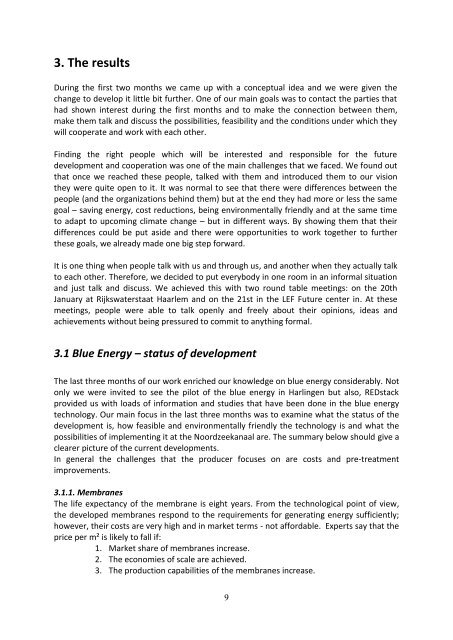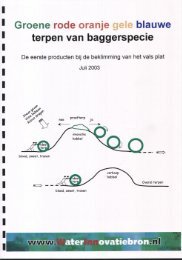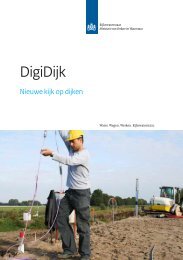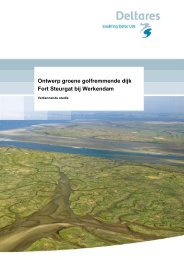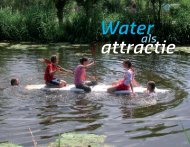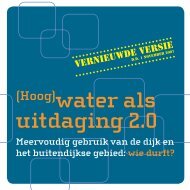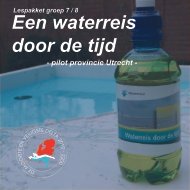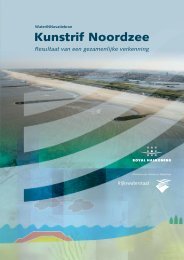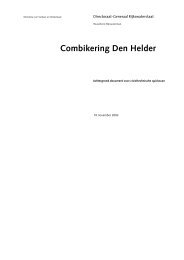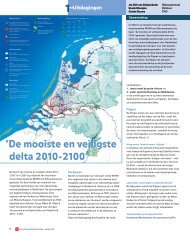Creating opportunities to adapt to climate change through innovative ...
Creating opportunities to adapt to climate change through innovative ...
Creating opportunities to adapt to climate change through innovative ...
You also want an ePaper? Increase the reach of your titles
YUMPU automatically turns print PDFs into web optimized ePapers that Google loves.
3. The resultsDuring the first two months we came up with a conceptual idea and we were given the<strong>change</strong> <strong>to</strong> develop it little bit further. One of our main goals was <strong>to</strong> contact the parties thathad shown interest during the first months and <strong>to</strong> make the connection between them,make them talk and discuss the possibilities, feasibility and the conditions under which theywill cooperate and work with each other.Finding the right people which will be interested and responsible for the futuredevelopment and cooperation was one of the main challenges that we faced. We found outthat once we reached these people, talked with them and introduced them <strong>to</strong> our visionthey were quite open <strong>to</strong> it. It was normal <strong>to</strong> see that there were differences between thepeople (and the organizations behind them) but at the end they had more or less the samegoal – saving energy, cost reductions, being environmentally friendly and at the same time<strong>to</strong> <strong>adapt</strong> <strong>to</strong> upcoming <strong>climate</strong> <strong>change</strong> – but in different ways. By showing them that theirdifferences could be put aside and there were <strong>opportunities</strong> <strong>to</strong> work <strong>to</strong>gether <strong>to</strong> furtherthese goals, we already made one big step forward.It is one thing when people talk with us and <strong>through</strong> us, and another when they actually talk<strong>to</strong> each other. Therefore, we decided <strong>to</strong> put everybody in one room in an informal situationand just talk and discuss. We achieved this with two round table meetings: on the 20thJanuary at Rijkswaterstaat Haarlem and on the 21st in the LEF Future center in. At thesemeetings, people were able <strong>to</strong> talk openly and freely about their opinions, ideas andachievements without being pressured <strong>to</strong> commit <strong>to</strong> anything formal.3.1 Blue Energy – status of developmentThe last three months of our work enriched our knowledge on blue energy considerably. No<strong>to</strong>nly we were invited <strong>to</strong> see the pilot of the blue energy in Harlingen but also, REDstackprovided us with loads of information and studies that have been done in the blue energytechnology. Our main focus in the last three months was <strong>to</strong> examine what the status of thedevelopment is, how feasible and environmentally friendly the technology is and what thepossibilities of implementing it at the Noordzeekanaal are. The summary below should give aclearer picture of the current developments.In general the challenges that the producer focuses on are costs and pre-treatmentimprovements.3.1.1. MembranesThe life expectancy of the membrane is eight years. From the technological point of view,the developed membranes respond <strong>to</strong> the requirements for generating energy sufficiently;however, their costs are very high and in market terms - not affordable. Experts say that theprice per m² is likely <strong>to</strong> fall if:1. Market share of membranes increase.2. The economies of scale are achieved.3. The production capabilities of the membranes increase.9


